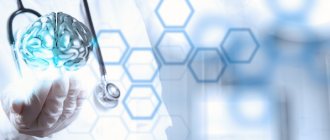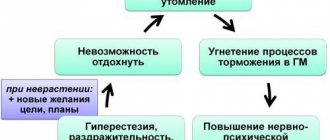Prosopalgia is a collective clinical concept that combines all pain syndromes that occur in the facial area. The complex anatomical and functional organization of the facial structures and nervous system of this area determines the diversity of pathogenetic mechanisms of pain.
Among the latter, we can distinguish compression, inflammatory, and reflex. The great individual significance of the face and increased attention to this part of the human body determines the frequent occurrence of prosopalgia of psychogenic origin. The neurotic component is often layered on top of any pathological processes in the facial area, which should certainly be taken into account in the treatment of facial pain of various natures. Due to its variable etiology, prosopalgia is the subject of supervision of doctors of various clinical specializations - neurology, otolaryngology, ophthalmology, dentistry, psychiatry.
Some information about the disease
Due to the fact that the facial part has a complex anatomical organization, pain in this area can appear for various reasons. It will be a little difficult to define. There may be damage to the facial or dental nerve or something else. In any case, only a specialist with examinations and tests can answer the question of why left-sided prosopalgia formed. Treatment of this disease is very difficult and long-term. As a rule, patients with this diagnosis turn to such specialists as an otolaryngologist, a neurologist and a therapist.
Treatment of pathology
Both conservative and surgical measures are used to treat facial pain In chronic pathology, medications may not bring the desired effect, but surgical intervention is not used without trial therapy.
Treatment of pathology includes:
- Elimination of dental problems;
- Stress relief;
- Taking muscle relaxants;
- Botulinum toxin injections for chronic inflammation of the nerve plexuses;
- Acupuncture (acupuncture);
- Surgeries on the TMJ and salivary gland.
Treatment of pathology must be comprehensive. Often, to get rid of the disease it is necessary to take therapy for several months. As for surgical treatment, today minimally invasive interventions are used that do not require long-term rehabilitation and do not leave scars.
Left-sided prosopalgia: causes of the disease
This disease appears due to a number of factors, of which there are a large number.
When the jaw and teeth are damaged, odontogenic pain occurs. Unpleasant sensations are transferred to the face. The causes of this disease are most often caries, damage to the pulp or dental nerve. In the presence of such symptoms, the pain is pulsating in the jaw area. If you drink cold water or hot tea, the discomfort becomes stronger. To diagnose and treat left-sided facial prosopalgia, you will need to consult a dentist.
Another common type of this disease is Slader syndrome. With it, pain occurs in the area of the eyes, tongue and ears. Moreover, these unpleasant sensations can radiate to the neck and shoulder blades.
Carotidynia is characterized by pain in the face due to inflammation of the carotid arteries. With such left-sided prosopalgia, unpleasant sensations occur in the area of the neck and teeth. Typically, a person suffers from this disease for several hours. It becomes especially unpleasant at the moment when someone touches the carotid arteries.
Causes of prosopalgia
An inflammatory reaction can act as an etiofactor of facial pain. Most often, prosopalgia of inflammatory origin occurs with sinusitis. It can be observed in otitis media, ophthalmological diseases (iridocyclitis, uveitis, conjunctivitis, keratitis, corneal ulcer), TMJ arthritis, and have an odontogenic etiology (pulpitis, periodontitis). Prosopalgia can occur with inflammatory lesions of the vessels of the facial area, for example, with Horton's disease. Often, neurogenic prosopalgia has an inflammatory etiology with neuralgia of the glossopharyngeal nerve, trigeminal nerve, Oppenheim syndrome, ganglionitis of the pterygopalatine ganglion, ganglioneuritis of the geniculate ganglion.
On the other hand, neurogenic prosopalgia may have a compression genesis, i.e., arise as a result of compression of nerve trunks or nodes due to changes in the relative position of the anatomical structures of the facial area, narrowing of bone and intermuscular nerve canals, development of tumor formations, etc. Compression etiology may have vascular prosopalgia, for example, carotidynia due to compression of the carotid artery.
The reflex mechanism of pain syndrome is often realized in odontogenic and neurogenic facial pain. The cause of prosopalgia in such cases is pathological reflex impulses coming from chronic infectious foci. An example is neuralgia of the ear ganglion. Myogenic prosopalgia of reflex genesis occurs with myofascial syndromes in the neck and shoulder girdle. Other causes of myogenic prosopalgia may include TMJ dysfunction (Costen syndrome), bruxism, and myofascial syndrome in the masticatory muscles.
Prosopalgia of psychogenic origin often occurs in suspicious, emotionally labile people against the background of overwork, chronic psycho-emotional discomfort, or as a result of an acute stressful situation. Often, psychogenic prosopalgia is observed in persons with hysterical neurosis, neurasthenia, and depressive neurosis. It can occur as part of psychiatric diseases such as schizophrenia, psychopathy, manic-depressive psychosis.
In some cases, prosopalgia is iatrogenic. Thus, Oppenheim syndrome can occur after ophthalmological operations; tooth extraction and other dental interventions can trigger the development of dental plexalgia or atypical odontalgia. One of the causes of neurogenic facial pain is damage to nerve structures during operations in the facial area. In addition, a number of facial pains do not have a clearly established etiology. For example, cluster headache, atypical prosopalgia, chronic paroxysmal hemicrania.
What is Charlen syndrome?
With this disease, the main pain is localized in the nose and inner corners of the eye. On top of everything else, conjunctivitis and runny nose are added to it. Unpleasant sensations also occur in the face, temples and forehead. In this case, joint movements are limited, a peculiar crunch appears, and chewing functions are disrupted when eating any food.
When the trigeminal nerve is damaged, very strong unpleasant sensations are observed in the facial area. When taking antispasmodic or analgesic medications, the pain does not disappear. Immediate assistance from a specialist is required.
Other reasons for the development of left-sided facial prosopalgia are migraine or otitis media.
Facial pain
The face is an important component of a person’s image; it reflects not only our mood and success in life, but also our well-being. Therefore, the significance of pain in this part of the body is difficult to overestimate.
Unfortunately, it is not always possible to make a correct diagnosis right away, because there are many reasons for the development of facial pain. Most often, both patients and doctors sin due to dental diseases. Often the patient even loses perfectly healthy teeth in an attempt to get rid of the pain before the correct diagnosis is made.
Why does it hurt?
Attention! This article will not
facial pain caused by diseases of the ENT organs, eyes and dental system, primary headaches (migraine, tension headache, cluster headache) are described (according to the International Classification of Headache Disorders, 2004).
Patients are often concerned about trigeminal neuralgia, Tholos Hunt syndrome, and atypical facial pain.
1. For trigeminal neuralgia
pain most often occurs in the area of the second and third branches of the nerve (upper and lower jaw). The disease is characterized by severe short-term attacks of pain lasting up to 2 minutes, which are provoked by irritation of a certain area of the skin of the face or the mucous membrane of the mouth or nose. Pain can be triggered by the most ordinary events - eating cold or hot food, wiping the face with a towel, etc. Usually, after the onset of an attack, a person does not cry or scream, but freezes in place, waiting for the severe pain to subside.
The causes of neuralgia can be brain tumors, multiple sclerosis, infectious diseases (most often herpes zoster), vasoneural conflict (contact irritation of the trigeminal nerve by a nearby artery).
Neuralgia of other cranial nerves (glossopharyngeal, laryngeal, etc.) can also cause facial pain, but are extremely rare.
2. If you gradually develop symptoms such as “boring” or “gnawing” pain in the eye, redness, double vision, drooping eyelid and exophthalmos (displacement of the eyeball forward, “bulging eye”), then most likely this is a syndrome Tolosa Hunta (painful ophthalmoplegia)
. Symptoms usually get worse over a few days. There may be spontaneous improvements. Another characteristic feature of this disease is the dramatic improvement with corticosteroids.
The diagnosis of Tholos Hunt syndrome is made if all other causes have been excluded, and there are many of them: infectious diseases, tumors, vascular lesions, sarcoidosis. The causes of this disease are not fully understood; it is believed that the main mechanism of development is autoimmune.
3. Atypical facial pain
is another cause of facial pain that is a diagnosis of exclusion. When examined and questioned, patients with atypical facial pain indicate areas of pain that do not fit into any zone of innervation of the cranial nerves.
The characteristics of pain can be very different, the manifestations are disguised as diseases of the teeth, ENT organs and other diseases. Such patients often have to go through many examinations by a dentist, maxillofacial surgeon, ENT surgeon, and neurologist. Moreover, the data from these examinations do not explain the cause of facial pain.
And that's not so bad. Healthy teeth are often removed, believing that facial pain is caused by dental pathology. Another problem is that patients with this disease often suffer from depression, anxiety and other mental disorders, which makes both treatment and diagnosis difficult. Actually, these pains are considered psychogenic. Most often they are provoked by stress or some kind of mental disorder.
Surveys
For facial pain, consultations with a dentist, ENT specialist, ophthalmologist, and sometimes an oral surgeon are often required to rule out pain that is NOT caused by neurological problems.
In most cases of facial pain, it is necessary to perform an MRI (often with contrast, in various modes) of the brain to exclude tumors, multiple sclerosis, vasoneural conflicts and other pathologies.
Treatment
In most cases of facial pain, with the possible exception of Tolos Hunt syndrome (which is treated as an autoimmune disease with hormones), you will be offered anticonvulsants (eg, carbamazepine, pregabalin, topiramate) or antidepressants (amitriptyline, duloxetine). The fact is that it is these groups of drugs that are most effective in treating pain.
If there is a vasoneural conflict (for example, with trigeminal neuralgia), you may also be offered a neurosurgical operation, when a special gasket is installed between the vessel and the trigeminal nerve, which prevents the artery from irritating the trigeminal nerve. Non-medicinal methods are also very effective - acupuncture, physiotherapy, biofeedback methods, psychotherapy, etc.
In any case, do not self-diagnose or self-medicate, consult a doctor.
Be healthy!
Maria Meshcherina
Photo istockphoto.com
What is otalgia?
This phenomenon characterizes itself as ear pain. Unpleasant sensations are localized not only here, but also in parts of the face. A fairly large number of diseases can have such symptoms. You should consult a specialist and undergo an examination. Possible nasopharyngeal tumor or venous sinus thrombosis. Also, one should not exclude the possibility that it is most likely just a migraine. One of the possible diseases with this symptomatology is idiopathic otalgia. It is characterized by the fact that ear pain occurs due to unknown reasons.
There is also red ear syndrome. With this disease, the discomfort is very painful and radiates to the jaw and back of the head. The blood vessels dilate and the skin takes on a reddish tint. And the temperature in the auricle becomes significantly higher.
Characteristics of atypical prosopalgia
This disease is also characterized by pain in the face and neck. Only the reason for their occurrence is not entirely clear and known. The disease usually develops in women in old age. This usually includes pain of a vegetative-vascular nature. In the case when the patient suffers from atypical prosopalgia, unpleasant sensations always follow him in the face and move to the neck. The pain affects one side. If it is bilateral, then it is characterized by asymmetry.
This disease also includes glossalgia, in which pain is observed in the tongue area. At the moment of an emotional outburst during the day, unpleasant sensations increase or, conversely, decrease. As a rule, it is very difficult for patients to describe the nature of the pain.
Clinical features
Facial pain of various origins differs in its clinical features regarding the nature, duration, paroxysmalness, and vegetative coloring of the pain syndrome. These distinctive features, as well as accompanying symptoms (if any), enable the neurologist to determine the type of prosopalgia, which is fundamental in the diagnosis and subsequent treatment of facial pain.
The permanent (constant) type of pain syndrome is more typical for myogenic, psychogenic and symptomatic prosopalgia. It may occur with episodes of increasing and decreasing pain. Paroxysmal pain phenomenon with intense painful attacks of variable duration against the background of complete or almost complete absence of pain in the interictal period is typical for neurogenic and vascular prosopalgia. A distinctive feature of the latter is the presence of a pronounced vegetative component - during paroxysm, swelling, lacrimation, hyperemia of the skin area, rhinorrhea, nasal congestion, redness of the conjunctiva, etc. are observed.
Bilateral in nature, as a rule, is symptomatic, myogenic and psychogenic prosopalgia. Moreover, the latter may be distinguished by the asymmetry of the pain phenomenon in the halves of the face. Vascular, neurogenic and atypical facial pain is usually unilateral.
Irradiation of pain is more typical with neurogenic and vascular prosopalgia, but can also be observed with facial pain of symptomatic origin. In addition, symptomatic prosopalgia is often reflexive in nature. The most illustrative example is odontogenic prosopalgia, caused by the occurrence of pain in the Zakharyin-Ged zones: mandibular, nasolabial, maxillary, frontonasal, temporal, sublingual, mental, laryngeal. Each zone is a reflection of the pathology of certain teeth, while toothache may be absent.
What are the classifications of pain syndromes?
According to the mechanism of development, somatogenic, psychogenic, vegetative and neurogenic unpleasant sensations are distinguished. The first type is associated with the impact on the human body of damaging factors during injury. For example, pain when internal organs are damaged. Neurogenic syndrome appears due to damage to the structures of the central nervous system.
Vegetalgia occurs with pathologies of internal organs. Psychogenic pain refers to those unpleasant sensations that usually occur after strong emotional experiences or depression. In this case, the patient relies on his condition and describes the situation as he sees it at the moment.
Classification of prosopalgia
Facial pain is classified primarily by mechanism of development. Prosopalgia is distinguished:
- vascular
- neurogenic
- myogenic
- psychogenic
- symptomatic
- atypical
- painful ophthalmoplegia
Vascular facial pain
includes:
- bundle cephalalgia
- paroxysmal hemicrania
- Horton's disease
- idiopathic sudden cephalalgia (ISH)
- SUNCT syndrome.
Neurogenic prosopalgia
includes:
- trigeminal neuralgia
- neuralgia of the glossopharyngeal nerve
- ganglionitis and ganglioneuritis of the nerve ganglia of the facial region.
Symptomatic facial pain
. Depending on the etiology, symptomatic prosopalgia is divided into
- ophthalmogenic
- odontogenic
- otorhinogenic
- viscerogenic.
To atypical
include pain that does not fit into the clinical picture of any of the types of prosopalgia specified in the classification. They are often caused by a combination of several pathogenetic mechanisms and have a psychogenic component.
Left-sided prosopalgia: symptoms of the disease
One of the most distinctive signs of this disease is very strong pain in the facial area. They can be different in character. Some people have paroxysmal or aching discomfort, while another patient has acute ones. It all depends on the cause of left-sided prosopalgia. It also happens that the pain increases when swallowing chewed food or pressing on the jaw or teeth.
In addition to unpleasant sensations in the facial area, other symptoms appear that also relate to this disease:
- severe increase in body temperature;
- lack of desire to eat;
- nasal congestion;
- an increase in the size of the lymph nodes;
- disturbance of restful sleep due to severe pain;
- redness of the skin and the appearance of a rash on it;
- typical facial asymmetry;
- periodic tinnitus;
- fatigue and weakness;
- increased lacrimation;
- the appearance of a nervous tic.
How is the disease diagnosed?
This process is very long. It includes several stages. To begin with, the specialist collects all the information and analyzes the person’s diseases. After this, the doctor asks about what worries the patient and finds out the causes of the listed symptoms. If necessary, the therapist then gives a referral to such specialized specialists as an otolaryngologist, a neurologist and a dentist. It should be noted that this procedure is not always mandatory.
Then you will need to undergo an x-ray examination. Thanks to him, it will be possible to find out the nature of the unpleasant sensations.
A general blood test is also a mandatory procedure. From its results we can tell whether there is inflammation or not.
Magnetic resonance imaging is prescribed if, in case of left-sided prosopalgia, diagnosis using previous methods did not give a final conclusion on the disease. Using this procedure, the source of inflammation is established, and, accordingly, you can find out the cause of the development of the disease.
They also test for the presence of inflammatory processes on the mucous membrane. Note that these methods are used only if the others did not help.
In addition to the procedures described above, the therapist and specialists can refer you to other diagnostic procedures. In this case, it is necessary to strictly adhere to the prescribed therapy and take only those medications prescribed by the doctor. You should not self-medicate. This will only make the situation worse. Remember that timely access to a medical facility guarantees recovery without complications.
Diagnosis of prosopalgia
In most cases, facial pain in itself is not a diagnosis, but rather a syndrome. In this regard, it is important to identify/exclude the underlying disease that caused prosopalgia. During diagnosis, a neurologist-algologist carefully studies the various characteristics of the pain phenomenon, palpates the facial muscles, and identifies trigger points (places of intense palpation pain). The exclusion/confirmation of the symptomatic nature of facial pain is carried out with the participation of an ophthalmologist, dentist, and otolaryngologist.
If necessary, dental x-rays, orthopantomograms, x-rays of the paranasal sinuses and the temporomandibular joint, otoscopy and pharyngoscopy, measurement of intraocular pressure, examination of eye structures, etc. are performed. In order to identify inflammatory changes, a clinical blood test is prescribed. Psychogenic and atypical prosopalgia are an indication for consultation with a psychiatrist or psychotherapist with psychological testing and pathopsychological examination.
How is the treatment carried out?
There is no single list of interventions for this disease. For left-sided prosopalgia, treatment depends on the causes of its occurrence. In addition, the specialist focuses on the nature of the unpleasant sensations and the reasons for their development.
Usually, first of all, the doctor tries to help the patient get rid of pain with an injection in the part of the face where it arose. Why injections, can't you just get by with pills? Unfortunately, in this case, such medications do not help at all.
Treatment of prosopalgia
Treatment of facial pain depends entirely on its etiology. Symptomatic prosopalgia first of all requires treatment of the underlying disease - otitis media, sinusitis, pulpitis, etc. With inflammatory genesis, neurogenic, vascular and myogenic prosopalgia are treated by prescribing anti-inflammatory medications (diclofenac, indomethacin, ibuprofen, nimesulide, etc.).
To relieve pain at trigger points, therapeutic blockades with the administration of corticosteroids and local anesthetics can be performed. For trigeminal neuralgia, the use of carbamazepine is effective, for ganglionitis - ganglion blockers (benzohexonium, pentamine), for Horton's disease - corticosteroids (prednisolone). Physiotherapeutic methods are additionally used for anti-inflammatory purposes: hydrocortisone ultraphonophoresis, DDT, magnetic therapy, electrophoresis.
Therapy for facial pain of compression origin, in addition to anti-inflammatory treatment, includes vascular (nicotinic acid, aminophylline) and decongestants (antihistamines, diuretics) and vitamins. B. Failure of conservative therapy is an indication for surgical treatment (for example, microsurgical decompression of the trigeminal nerve). Persistent prosopalgia in ganglioneuritis is an indication for removal of the affected ganglion; in trigeminal neuralgia, in such cases, a measure of temporary pain relief is radiofrequency destruction of the trigeminal nerve root.
In many cases, a mandatory component of the treatment of facial pain is sedative therapy: soothing herbal preparations, mild tranquilizers (mebicar), antidepressants (St. John's wort extract, fluvoxamine, sertraline). If necessary, vegetotropic agents are prescribed (belladonna alkaloids + phenobarbital, belladonna extract). Therapy for psychogenic prosopalgia is carried out using psychotherapy methods and psychotropic drugs selected in accordance with the clinical characteristics: tranquilizers, neuroleptics, antidepressants. Electrosleep and darsonvalization are indicated.
What procedures does a specialist prescribe for illness?
Sometimes the patient is sent to the physical room. Here the patient undergoes physiotherapeutic procedures, where painkillers are used. For example, for left-sided prosopalgia, a disease of the nervous system, electrophoresis with novocaine is often prescribed. Treatment methods such as hydrocarbon treatment, magnetic therapy and laser therapy are also carried out. If there is inflammation in the human body and the process develops, then it is treated with antibiotics and anti-inflammatory drugs.
A general recommendation for all patients is to take vitamins. This is what will increase the body’s resistance to all kinds of harmful bacteria, and also improve immune protection.
What is the prevention of prosopalgia?
In order for you to get sick less, you should pay more attention to your health and lifestyle. Namely, as mentioned above, strengthen the immune system and the body’s protective function with the help of vitamins and hardening procedures. Everyone needs to avoid hypothermia. Because this can cause not only left-sided prosopalgia, but also upper respiratory tract infections. If you have diseases of the ears or teeth, you should immediately contact a specialist to avoid complications.
Of course, when the first symptoms of prosopalgia appear, you should go to the doctor and receive appropriate treatment. The sooner you take action, the easier and faster the disease will pass.








